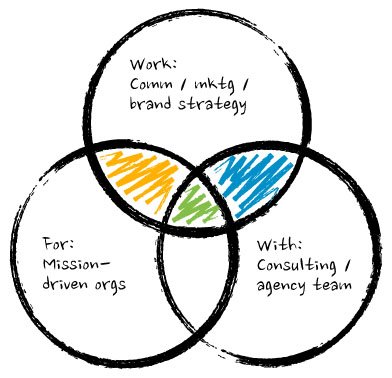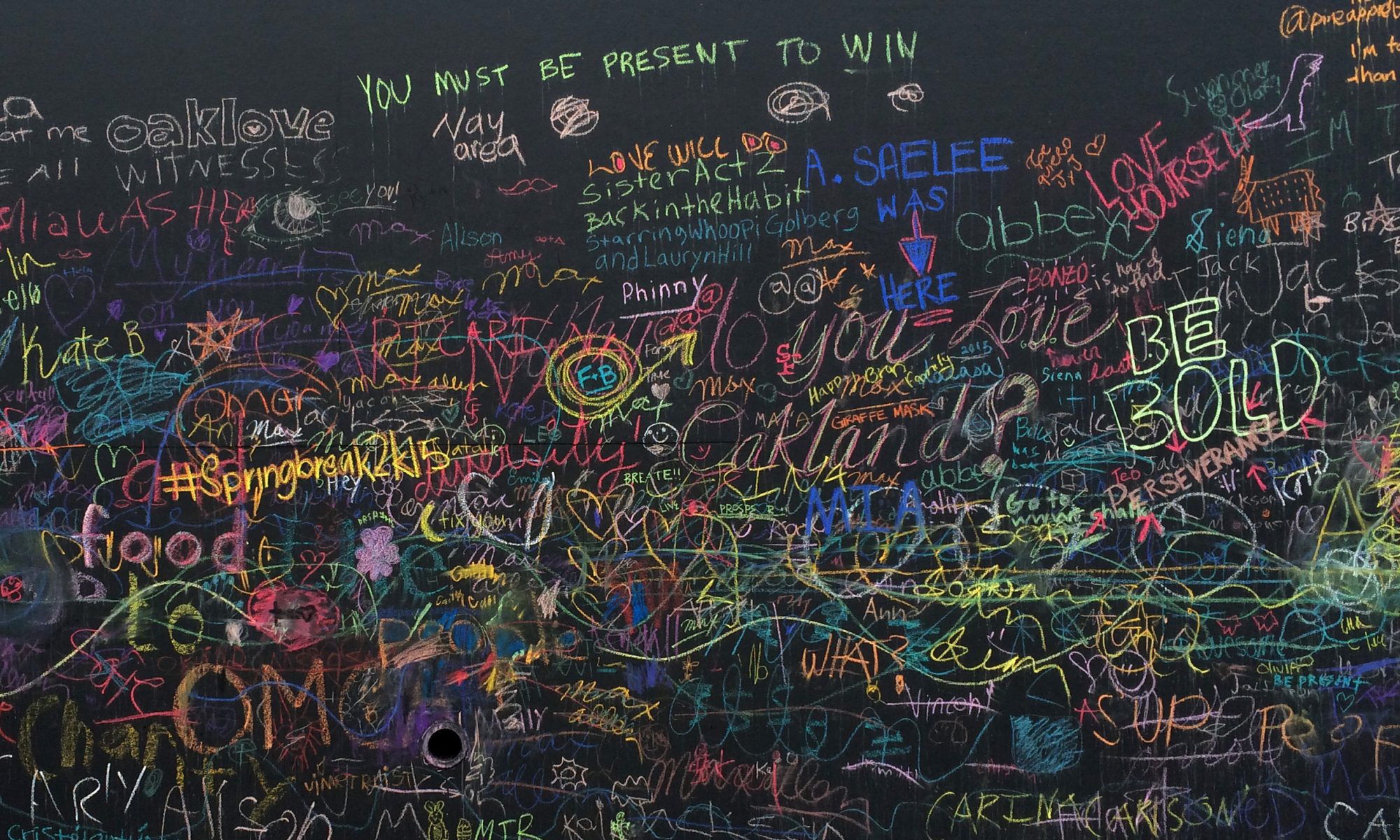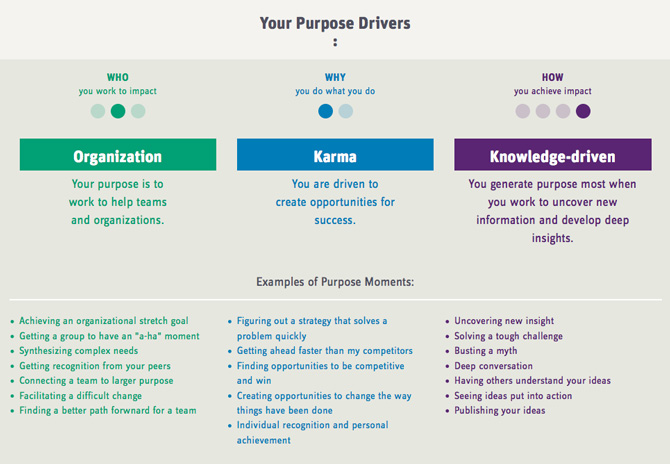I’m always on the lookout for great people to work with! Wondering what’s a fit? Naturally, I have a visualization for that:
 The green zone is my ideal – a strategic role in a team-based, consulting environment, working for mission-driven clients. If you can help me make this happen, you’ll be my hero!
The green zone is my ideal – a strategic role in a team-based, consulting environment, working for mission-driven clients. If you can help me make this happen, you’ll be my hero!
Mission-driven is my shorthand for a range of possibilities including both for- and not-for-profit organizations that have a strong sense of purpose beyond making money and contribute positively to their communities. I consider many entrepreneurs and small businesses to be part of this group even without an overt social mission.
Only a tiny handful of people work completely at the intersection of brand, mission, and team, so while I cultivate that space there are two other intersecting zones I look for.
The yellow zone comprises the heart of my work as a brand and communication consultant. The engagements I enjoy most are developing organizational identity, positioning, and narratives from the ground up. In plain terms, that means I help them get clear about what they are and can go, gain new insights into their audiences and markets, and bring it all together in messages that are simple and powerful. I always appreciate referrals to leaders in mission-driven organizations who are ready to raise their visibility and impact.
While this offers rewarding work for clients I love, direct consulting is often solo. To balance that I also look for opportunities on the other side, in the blue zone. It’s doing the same kind of work, but as a freelancer with existing brand agency teams for more mainstream clients. Working with teams is collaborative and accelerates learning, and these experiences give me renewed inspiration and tools to bring back to my mission-driven clients. If you know of agencies or consulting firms that need freelance help on their projects, introductions would be most welcome.
Those are three ways you can help me grow. Please let me know what I can do to help you!


